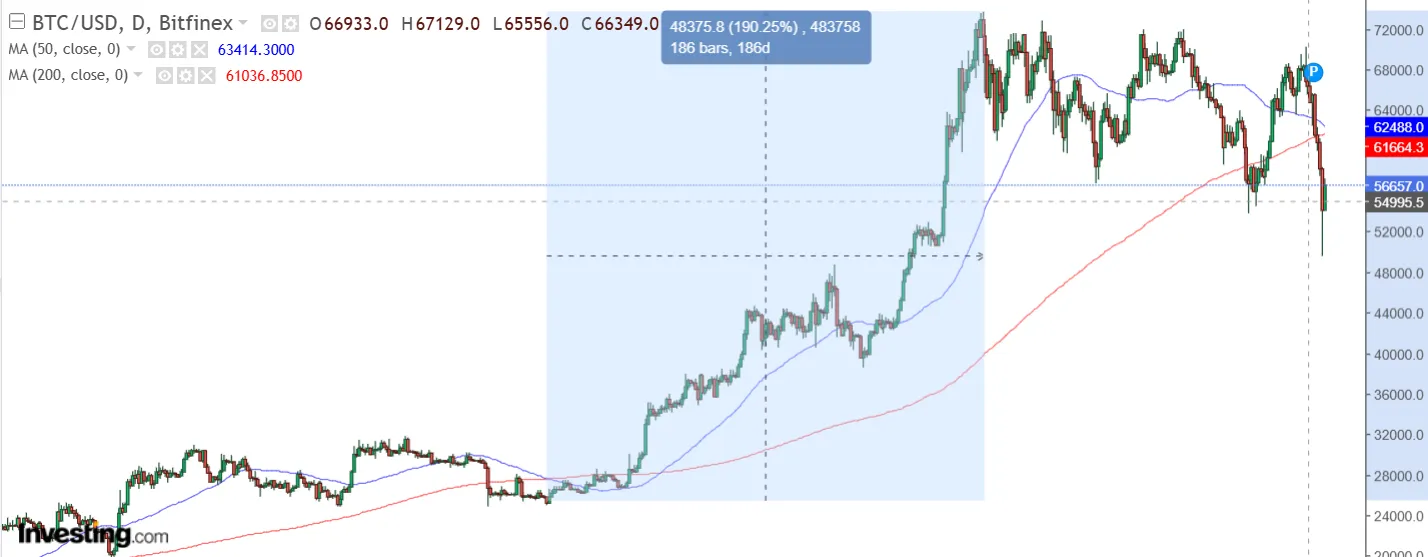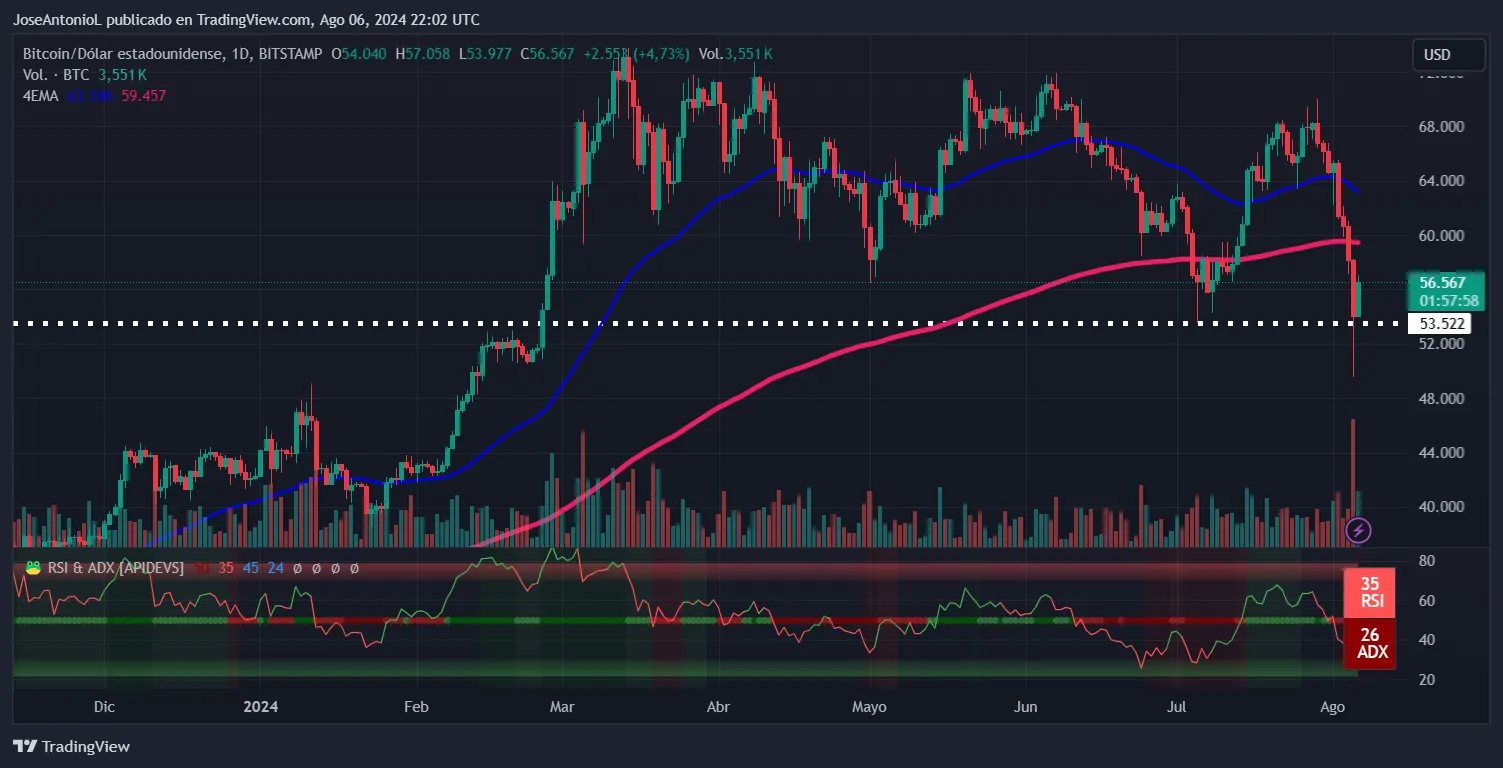
Bitcoin crashed to a daily low of $49,577 yesterday and could be on the brink of a death cross, a pattern that has historically spooked traders and stirred up a storm of pessimism.
This ominous-sounding phenomenon in technical analysis occurs when the 50-day simple moving average (SMA) dips below the 200-day SMA, indicating that short-term momentum is lagging behind the long-term average. At its current price of $56,386, the 50-day SMA is at $62,488, while the 200-day SMA is at $61,664.
A death cross is seen as a bearish signal among short-term traders, but—despite its name—does not necessarily mean impending disaster. History has proven that long-term hodlers who are capable of going through the pains of a bearish period are often rewarded with huge gains after phenomenal recoveries.
The last time Bitcoin faced a death cross was in September 2023—which happens to be among the most bearish months in Bitcoin’s history. The cryptocurrency bottomed out below $25,000 at the time, only to register a 190% rise breaking past the $70,000 price line six months later.

Yet, the death cross's reputation precedes it, often triggering panic among inexperienced traders who leap to dire conclusions with limited information—especially when market sentiment is already gloomy. Indeed, Bitcoin has plunged 30% between its highest price on July 29 and its lowest price on August 5, which is worse than the Nasdaq and the SP500 did in the same period.
However, seasoned crypto traders seem less rattled by the looming death cross than their mainstream counterparts.
“If you are like most crypto investors, you’re cycling through a brutal swing of emotions, including fear and despair. For many, the emotion that strikes hardest is anger,” Matt Hougan, the CIO of Bitwise tweeted yesterday, “I feel those emotions too. But I feel something else too—something born from six-plus years of managing money in crypto full-time: Opportunity. Because I've seen this movie before.”
Crypto markets are notorious for their volatility, with extreme upswings and drawn-out recoveries from sudden spikes or crashes. Tom Lee, a crypto market specialist, pointed out that missing out on Bitcoin's 10 best-performing days in a year could result in a 25% loss compared to those who held onto their BTC.

Moreover, the death cross's significance varies depending on which moving averages are used. Exponential moving averages (EMAs), which prioritize recent events in current prices, paint a different picture. Both indicators are currently moving more in parallel versus the SMAs, suggesting that we are seeing a reaction to a dip rather than a long-term bearish trend.
Metrics and decision-making are also vastly different for investors who hold leveraged positions or engage in day trading. They may rely on more immediate support and resistance levels instead.
A death cross—or its opposite, a golden cross—should never be considered in isolation, particularly as they focus solely on past performance. Traders should evaluate their strategies using other indicators and timeframes. For instance, weekly charts typically show a bullish trend over a longer timeframe, with expectations of a bearish correction in shorter timeframes.
Ultimately, making decisions based on FUD is never a good idea, nor is overreacting to short-term volatility. Caution is always advisable.
Edited by Ryan Ozawa.